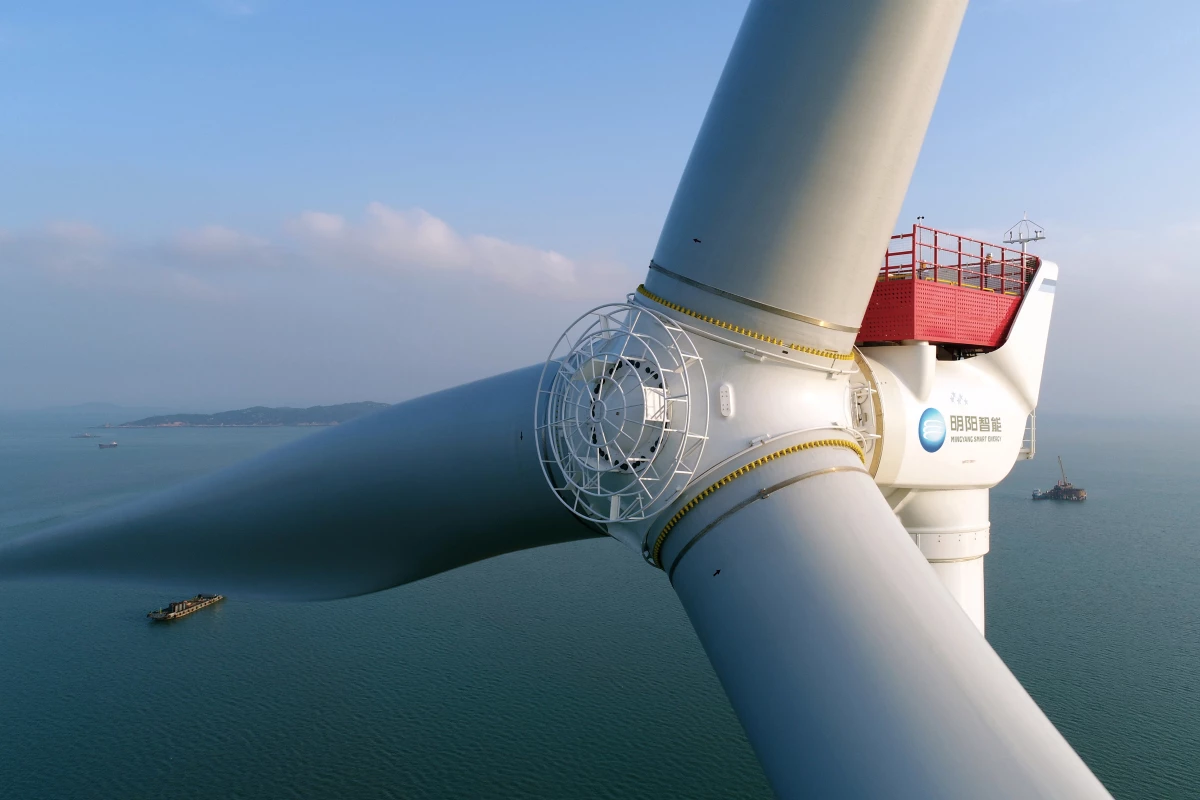Can heat reuse make data centres truly sustainable? - Tech Monitor
Update: 2023-04-04
Description
Share this article
Copy Link
Share on X
Share on Linkedin
Share on Facebook
Mark Bjornsgaard is getting used to the attention. "Ten days ago, I wasn't," says the founder of Deep Green, referring to the unprecedented publicity his firm achieved by installing one of its digital boilers to heat a swimming pool in Exmouth, Devon. Something about using the waste heat generated from servers - a resource that apparently few people knew existed - seemed to capture the imagination of the British public. Since then, Bjornsgaard has been inundated by requests from other swimming pools for more information about its digital boilers, as well as local government leaders eager to learn how these pint-sized data centres might be used in their own public heating projects.
"From a business point of view, it's been absolutely amazing, because we are now walking into conversations which we didn't think we'd have for a couple of years," says Bjornsgaard. It's also a sign of the times. Amid unprecedented fluctuations in energy insecurity thanks, in large part, to Russia's invasion of Ukraine, anxiety about rising electricity prices is at an all-time high across Europe. As well as sparking a conversation about national reliance on natural gas, attention has drifted toward how energy might be saved or put to better use - not least in a cloud computing infrastructure that generates more carbon emissions than the aviation industry, thanks in part to its elaborate and power-hungry cooling systems.
All that electricity and heat energy could, critics argue, be put to much better use outside the data centre and for the benefit of society at large. Going by the law of physics that energy is never lost but merely changes form, it is conceivable that the many gigawatts of electricity used to power data centres could, if left uncooled, be converted into heat to warm thousands of homes and businesses. That potential has seen Norway and Germany pass laws mandating data centre operators have a plan - any plan - for heat reuse on their premises, while similar projects have seen the cloud warm greenhouses, fish farms, homes and offices. "And that's good," says Bjornsgaard, who professes a great belief in practical green energy solutions. When push comes to shove, he argues, "we can't muck about for the next ten years with space lasers and cracking hydrogen and trying all these elaborate [projects] that we love to engineer."
The mechanics of heat reuse
Servers get very hot, very quickly - so much so that your common variety rack would probably catch fire were it not artificially cooled. This inevitably compromises the overall electrical efficiency of the data centre, calculated using a ratio called Power Usage Effectiveness. The more power that can be used for computation over cooling, the better. Even with the most efficient cooling systems, however, the average PUE score for most data centres remained at an uncomfortably high 1.57 throughout 2021 - meaning as much as 40% of power running through these facilities was used for cooling.
Reusing waste heat would, in theory, drag those numbers down, make those data centres sustainable and contribute heat and warmth to local communities in the bargain. Such has been the case in Dublin, where AWS is participating in a community heating scheme, and in Stockholm, where one data centre operator has set the goal of using its waste heat energy to heat 10% of the city by 2035. The scale of these schemes, however, is also a reminder that many of these projects usually only come about through massive capital investment - not least because most of them reuse heat from air-cooled data centres using expensive heat pumps. An alternative lies in immersion cooling for edge high-performance compute units, wherein the server is surrounded by a liquid - usually water, or oil - and then wrapped in copper piping to build a heat exchanger.
This also describes Deep Green's first, crude prototype digital boiler, which consisted of little...
Copy Link
Share on X
Share on Linkedin
Share on Facebook
Mark Bjornsgaard is getting used to the attention. "Ten days ago, I wasn't," says the founder of Deep Green, referring to the unprecedented publicity his firm achieved by installing one of its digital boilers to heat a swimming pool in Exmouth, Devon. Something about using the waste heat generated from servers - a resource that apparently few people knew existed - seemed to capture the imagination of the British public. Since then, Bjornsgaard has been inundated by requests from other swimming pools for more information about its digital boilers, as well as local government leaders eager to learn how these pint-sized data centres might be used in their own public heating projects.
"From a business point of view, it's been absolutely amazing, because we are now walking into conversations which we didn't think we'd have for a couple of years," says Bjornsgaard. It's also a sign of the times. Amid unprecedented fluctuations in energy insecurity thanks, in large part, to Russia's invasion of Ukraine, anxiety about rising electricity prices is at an all-time high across Europe. As well as sparking a conversation about national reliance on natural gas, attention has drifted toward how energy might be saved or put to better use - not least in a cloud computing infrastructure that generates more carbon emissions than the aviation industry, thanks in part to its elaborate and power-hungry cooling systems.
All that electricity and heat energy could, critics argue, be put to much better use outside the data centre and for the benefit of society at large. Going by the law of physics that energy is never lost but merely changes form, it is conceivable that the many gigawatts of electricity used to power data centres could, if left uncooled, be converted into heat to warm thousands of homes and businesses. That potential has seen Norway and Germany pass laws mandating data centre operators have a plan - any plan - for heat reuse on their premises, while similar projects have seen the cloud warm greenhouses, fish farms, homes and offices. "And that's good," says Bjornsgaard, who professes a great belief in practical green energy solutions. When push comes to shove, he argues, "we can't muck about for the next ten years with space lasers and cracking hydrogen and trying all these elaborate [projects] that we love to engineer."
The mechanics of heat reuse
Servers get very hot, very quickly - so much so that your common variety rack would probably catch fire were it not artificially cooled. This inevitably compromises the overall electrical efficiency of the data centre, calculated using a ratio called Power Usage Effectiveness. The more power that can be used for computation over cooling, the better. Even with the most efficient cooling systems, however, the average PUE score for most data centres remained at an uncomfortably high 1.57 throughout 2021 - meaning as much as 40% of power running through these facilities was used for cooling.
Reusing waste heat would, in theory, drag those numbers down, make those data centres sustainable and contribute heat and warmth to local communities in the bargain. Such has been the case in Dublin, where AWS is participating in a community heating scheme, and in Stockholm, where one data centre operator has set the goal of using its waste heat energy to heat 10% of the city by 2035. The scale of these schemes, however, is also a reminder that many of these projects usually only come about through massive capital investment - not least because most of them reuse heat from air-cooled data centres using expensive heat pumps. An alternative lies in immersion cooling for edge high-performance compute units, wherein the server is surrounded by a liquid - usually water, or oil - and then wrapped in copper piping to build a heat exchanger.
This also describes Deep Green's first, crude prototype digital boiler, which consisted of little...
Comments
In Channel

















